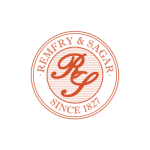Stronger together
‘Co-branding’ or ‘cross-branding’ is a strategic alliance between two or more brands in which the brand names of all partners are used to promote a single product or service.
The publicity buzz, exposure on social media, word of mouth referrals due to the coming together of two brands, increased consumer recognition and a dip into the loyal and expansive fan base of another – co-branding makes it possible for brands to explore and augment their products and ideas with an element of surprise and delight for consumers, at minimal investments while leaving long lasting impressions.
Legally speaking, it is a marketing strategy that uses cross-licensing of successful trademarks from different companies to market a new product.
Various marketing permutations and combinations are possible. For example:
1. Co-branding can involve players operating in the same industry that tap into a different class of consumers. H&M’s repeated partnerships with luxury fashion designers by releasing limited edition co-branded collections – Jimmy Choo, Versace, Balmain and even home-grown luxe brand Sabyasachi – come to mind immediately in this context. In fact, the union of fast fashion giant H&M and luxury Indian designer Sabyasachi in 2021 threw the internet into such a tizzy that the collection sold out within minutes of dropping – perfectly highlighting the power of co-branding marketing strategies.
2. That said, the 2021 Gucci and Balenciaga ‘Hacker Project’ where Gucci and Balenciaga motifs merge to create new interpretations of signature pieces from both luxury fashion houses is a stellar example of a collaboration that seeks to entice a common consumer base.
3. However, more often than not, such partnerships involve brands that operate in different commercial spaces. Spotify, the music streaming app’s partnership with Uber to create a ‘soundtrack for your ride’ is a well-known example of one such successful co-brand.
But even the most well thought out branding collaborations can fail. The coming together of Kendall Jenner and Pepsi in 2017 for an ad-campaign attracted severe backlash for appropriating and trivialising protest movements – such as Black Lives Matter – for commercial gain, and Pepsi had to withdraw the commercial within 48 hours of its release.
Success mantras
1. Shared values: When Shell, a petroleum company, partnered with toy company Lego, the Shell brand began being used on Lego toys. However, the alliance ran aground on account of Shell’s reputation for poor environmental practices. With a focus on raising environmentally conscious children, subsequent public outrage led to dissolution of the Shell–Lego partnership. Thus, values and brand stories must align for a branding marriage to succeed.
2. Long-term goals and the fine print: It is beneficial to formulate long terms goals of a co-branding campaign and secure future business needs and interests. For instance, if an upcoming company partners with a globally renowned corporation, in the initial days, it may be a win-win for all. The first party gets tremendous exposure and the latter earns handsomely from an exclusive association and royalty payments. But what happens when the upcoming company becomes extremely popular in its own right? What if it wants to expand its partnerships? Or what if the more renowned brand suffers a loss of credibility? Contracted disputes can be avoided if a legal agreement at the start of the co-branding partnership embodies long-term business vision and provides for best (extension clauses) and worst case (termination clauses) scenarios.
3. Do not ignore legal pitfalls: In 2018, the Indian Institute of Technology, Delhi (IIT, Delhi) filed a case before the High Court of Delhi against the Delhi Metro Rail Corporation (DMRC) and others alleging that use of the name ‘FIITJEE IIT Metro Station’ for a metro station situated near the IIT, Delhi campus gave a false impression that FIITJEE had some association with the IIT, Delhi.
As FIITJEE is an institute that coaches students for the IIT entrance examination (an examination termed the ‘IIT-JEE’), the use of the name FIITJEE along with IIT was interpreted to imply a brand association between the two whereas no such official association existed. The court resolved the matter by directing the DMRC to instal a disclaimer/advertisement at the said metro station being identical to the font and size in which the trade name FIITJEE was advertised stating that “FIITJEE is not connected or associated with any IIT”.
To avoid such legal issues, it is of utmost importance that co-branding tools be used with the express permission of all brand owners which is formalised in a suitable agreement.
Conclusion
If co-branding fails, negative fall-outs can include dilution of trademarks, marketplace confusion, loss of goodwill and tarnishing of reputation due to a partner’s shortcomings. Disputes centred on IP ownership and licensing fees and costs may also arise. Well negotiated and drafted licensing agreements must, therefore, lie at the heart of any co-branding exercise.
It has been reported that 71% of consumers enjoy multiple brands coming together to offer a unique product. To conclude: a perfect union is comparable to when the fictional Tony Stark, also known as Marvel Comic's Iron Man, joins The Avengers; though Stark is fully capable of saving Earth alone, he knows that teaming up with other superheroes will allow him to save multiple planets.
V Mohini
Partner, Remfry & Sagar
Aarti Aggarwal
Associate, Remfry & Sagar












